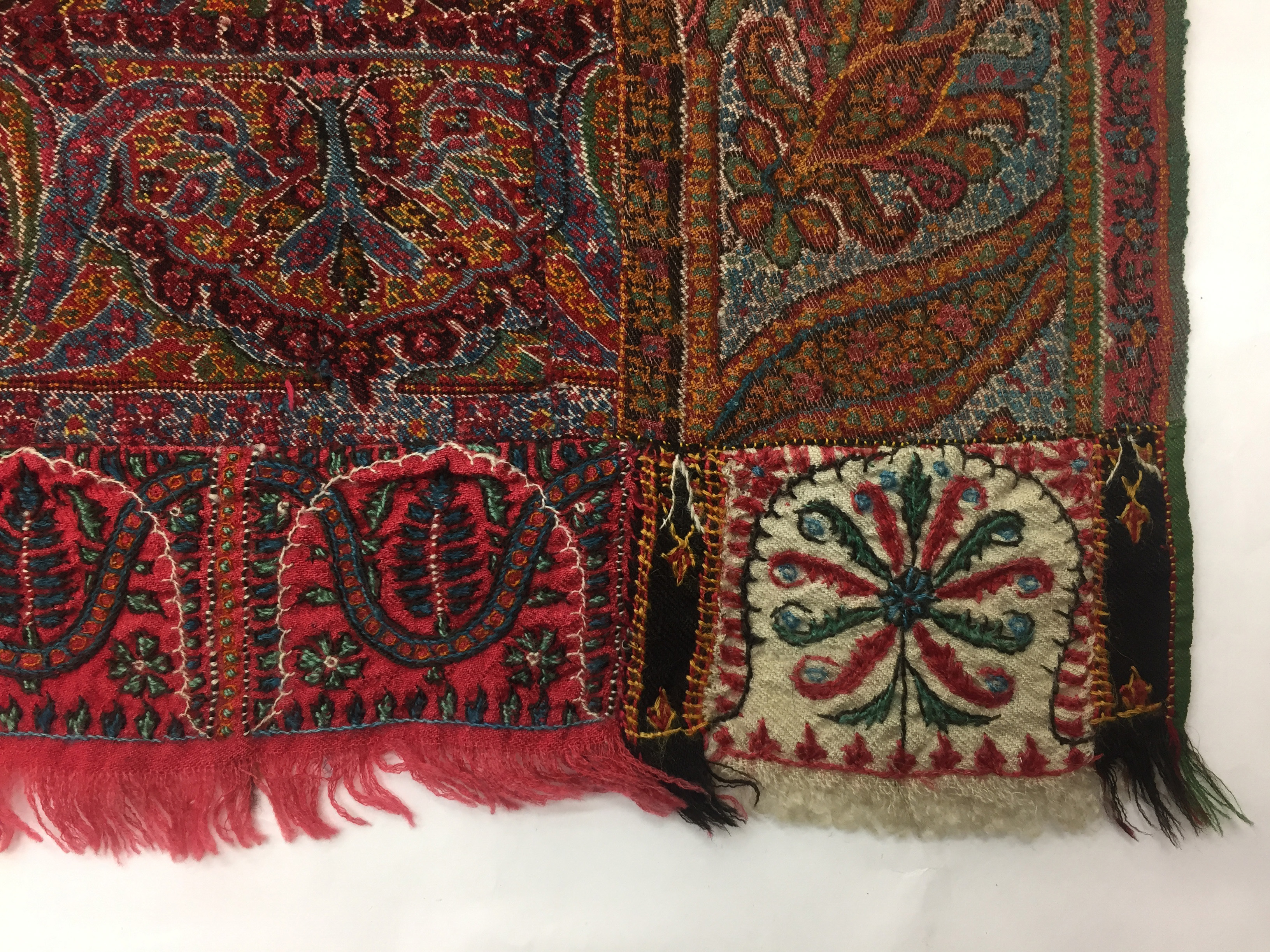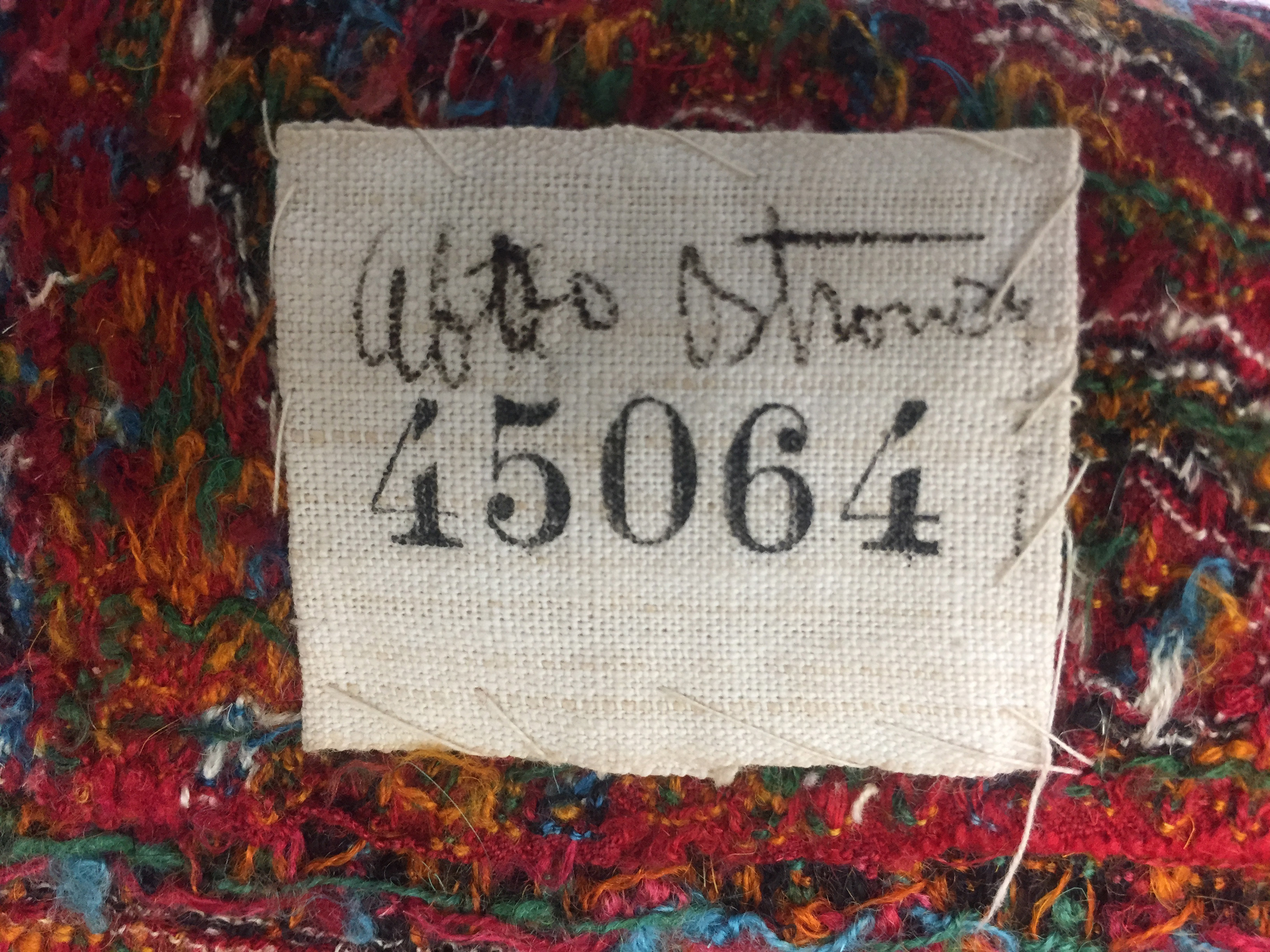Shawl
Not on view
Kashmir shawls are known for being part of the sophisticated male dress/garderobe at the court of the Mughal Emperor Akbar (r. 1555–1605). They became items of fashionable dress in Europe by the late 18th century and had reached the peak of their popularity there during the first half of the 19th century. Leaders of fashion such as the Empress Josephine in France and Emma Hamilton in Britain owned large collections of Kashmiri shawls, which elegantly complemented the loose-fitting "Empire" fashions of the time. By the mid-19th century, the designs became denser and more elaborate. The traditional pine-cone pattern became highly stylized to accommodate European tastes.
The elaborate design of this shawl is typical of the kind woven in India for the British and European market in the 19th century. While the finest Kashmiri shawls are made of soft and expensive pashmina wool (the soft under-hair of the Himalayan goat) and have designs woven on the loom, many examples from the 1830s onwards, such as this one, favored embroidery to achieve similar decorative schemes. Such a technique was easier and quicker to manufacture and thus better positioned to respond to the growing demand and market in Europe in the second half of the 19th century.
Due to rights restrictions, this image cannot be enlarged, viewed at full screen, or downloaded.
This artwork is meant to be viewed from right to left. Scroll left to view more.




